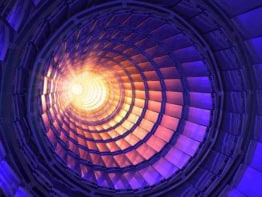The first collisions have been detected at the Relativistic Heavy Ion Collider (RHIC) at the Brookhaven National Laboratory in the US. The STAR detector recorded the first collisions at 9pm local time on Monday, while the PHOBOS detector recorded its first events early on Tuesday. The first physics results from RHIC are expected at the beginning of next year.
One of RHIC’s main goals is to produce a quark-gluon plasma – the state of matter that is thought to have existed just millionths of a second after the big bang. Quarks are normally confined in neutrons, protons and other composite particles by the strong force, which is carried by gluons. In a quark-gluon plasma, however, the quarks are free to move throughout the plasma. By studying the properties of the quark-gluon plasma as a function of temperature, energy and particle densities, and entropy, physicists hope to learn more about the strong force and the origins of the universe.
Earlier this year the CERN particle physics laboratory in Geneva reported evidence for quark-gluon matter, but stopped short of claiming that it had seen a quark-gluon plasma. The first RHIC collisions – between beams of gold nuclei with 30 gigaelectron volts (GeV) per nucleon – are four times more energetic than the collisions at CERN. The machine consists of two separate accelerator rings, both 2.4 miles in circumference, that collide beams at six points. RHIC should eventually be capable of beam energies of 100 GeV per nucleon – about ten times the CERN energy.



